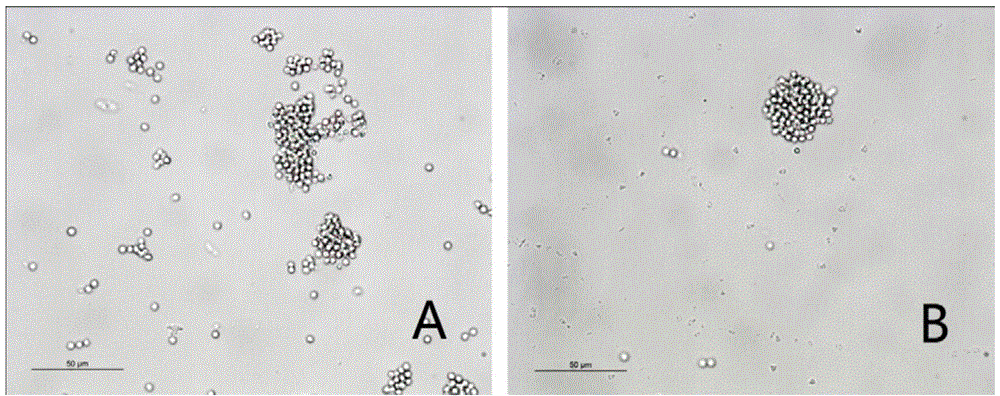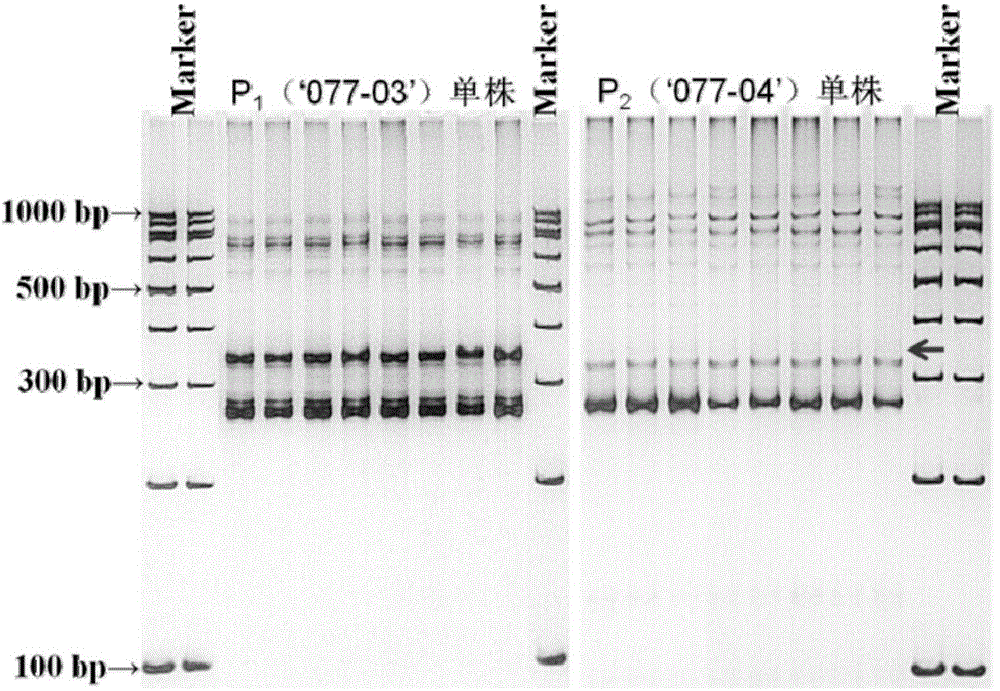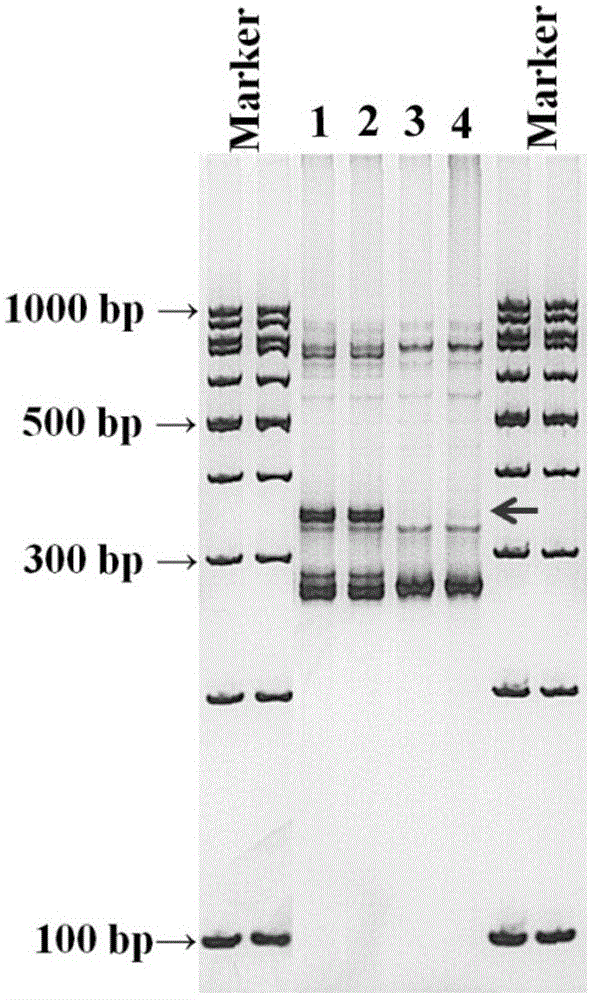Molecular marker linked with turnip clubroot resistant gene and method for obtaining molecular marker
A molecular marker and anti clubroot disease technology, applied in the biological field, can solve the problems of cumbersome operation procedures, difficult to adapt to the needs of breeding practice, affecting the sustainable development of cruciferous crops, etc., to achieve the effect of overcoming a long time period
- Summary
- Abstract
- Description
- Claims
- Application Information
AI Technical Summary
Problems solved by technology
Method used
Image
Examples
Embodiment Construction
[0019] The method for obtaining the anti-clubbing molecular marker BrSSR133 of turnip mainly comprises the following steps:
[0020] 1. Using the clubroot resistant turnip parent material P 1 ('077-03') and susceptible parent material P 2 ('077-04'), the disease-resistant parent '077-03' and the susceptible parent '077-04' were crossed to obtain F 1 population, and construct the corresponding BC through testcross and selfcross pathways 1 , F 2 and F 3 group.
[0021] 2. According to the disease symptoms of the naturally occurring materials in the field and the microscopic examination of the dormant spores of the pathogen, it is clear that the pathogen of the disease is Plasmodium brassicae.
[0022] The specific method is: observe the disease symptoms of natural diseased materials in the field, isolate the dormant spores of the pathogen from the diseased roots and soil, and observe the morphological characteristics of the dormant spores under a 600-fold optical microscope...
PUM
 Login to View More
Login to View More Abstract
Description
Claims
Application Information
 Login to View More
Login to View More - R&D
- Intellectual Property
- Life Sciences
- Materials
- Tech Scout
- Unparalleled Data Quality
- Higher Quality Content
- 60% Fewer Hallucinations
Browse by: Latest US Patents, China's latest patents, Technical Efficacy Thesaurus, Application Domain, Technology Topic, Popular Technical Reports.
© 2025 PatSnap. All rights reserved.Legal|Privacy policy|Modern Slavery Act Transparency Statement|Sitemap|About US| Contact US: help@patsnap.com



